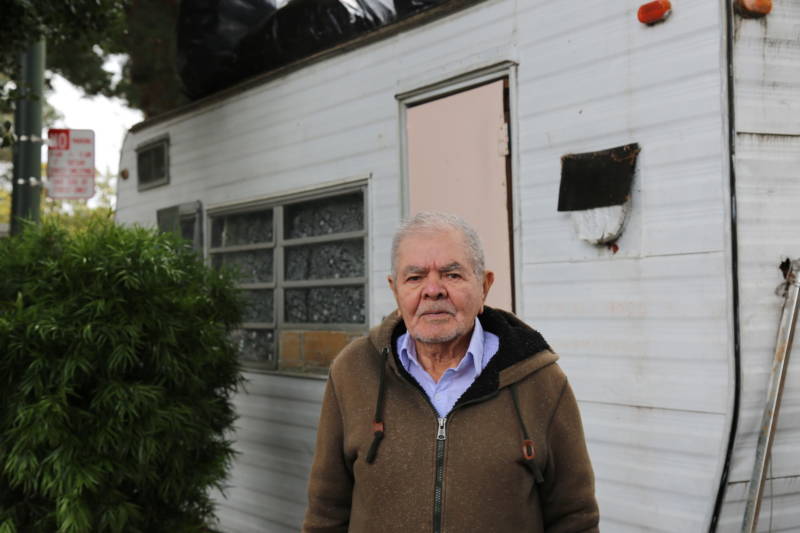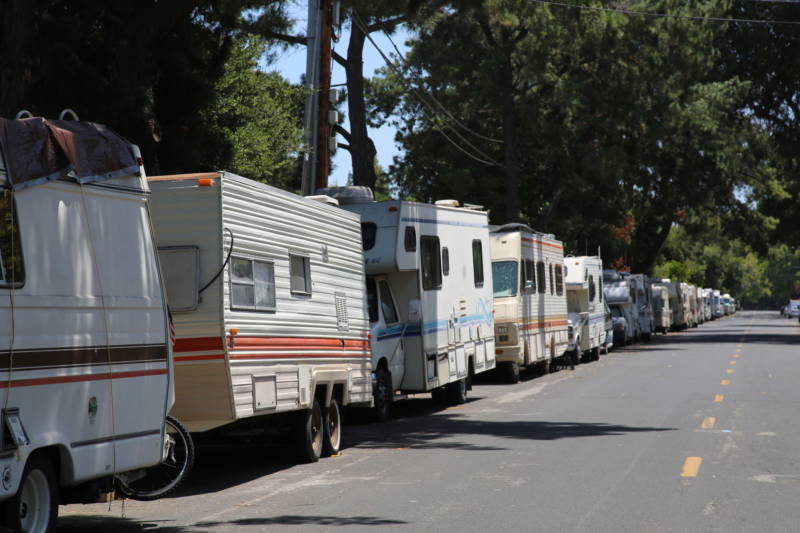Unconventional Housing
Victor Manuel Escobar Rivas is not the only Bay Area resident without a mailbox.
“We have a housing crisis, people are renting whatever they can,” said Julio Garcia of Nuestra Casa, a community organization in East Palo Alto.
Garcia sees many residents who are shut out of the expensive housing market but are employed in the area. To avoid lengthy commutes, people rent sheds and converted garages. Others get an recreational vehicle and pay to park it in a backyard. Some even rent tents in backyards.
“This is the norm now. It’s not the exception,” said Garcia.
Recently, Megan Gosch flicked through a powerpoint in a conference room in Redwood City. A white colonial house with a red door came on the screen, captioned, “TRADITIONAL HOUSING.” Another few slides flashed by, and another slide showed a trailer sitting in the backyard of a home, captioned, “NON-TRADITIONAL HOUSING.”
In May of 2018, presentations like these were used as part of an effort to canvas neighborhoods for unconventional housing, in order to add them to the master address form. Back in 2018, cities and counties across the nation took part in the Local Update of Census Addresses (LUCA). For cities worried about an undercount, including San Jose, New York City, and Houston, Texas, canvassing can produce addresses not found elsewhere.
Throughout May and June of 2018, canvassers in San Mateo and Santa Clara counties targeted neighborhoods deemed “hard to count.”
They were taught to spot the difference between a garage and an inhabited garage. They looked for extra doorbells, satellite dishes, or drapes in the windows. From the sidewalk, they checked to see if power lines from the main house extended to the extra unit, or even looked to see if they could see children’s drawings through the windows.
In Santa Clara County, canvassers added 3,100 addresses to the list. In San Mateo County, they added 1,915. And in East Palo Alto alone, they found 701 units.
But canvassing efforts cannot find all forms of unconventional housing. For one, apartments that seem traditional from the outside might house multiple families.
“People are sharing their apartments. I don’t know if those people are going to get counted or not,” said Garcia.
Two or three families might share a one-bedroom apartment. That can be about 15 people in an apartment designed for one or two, explained Garcia.
And even if a census form arrives in their mailbox, or an enumerator shows up at their door, tenants fear that a landlord could discover their sublease.
“The fear is that you are going to get evicted if the landlord finds out how many people are living there," said Garcia. "And then where do you go?”
“We need to remind people that Title 13 of the U.S. Code prohibits any other governmental agency from accessing your information, so the local planning department will have zero access to your information,” said Casey Farmer, census lead for Alameda County.

